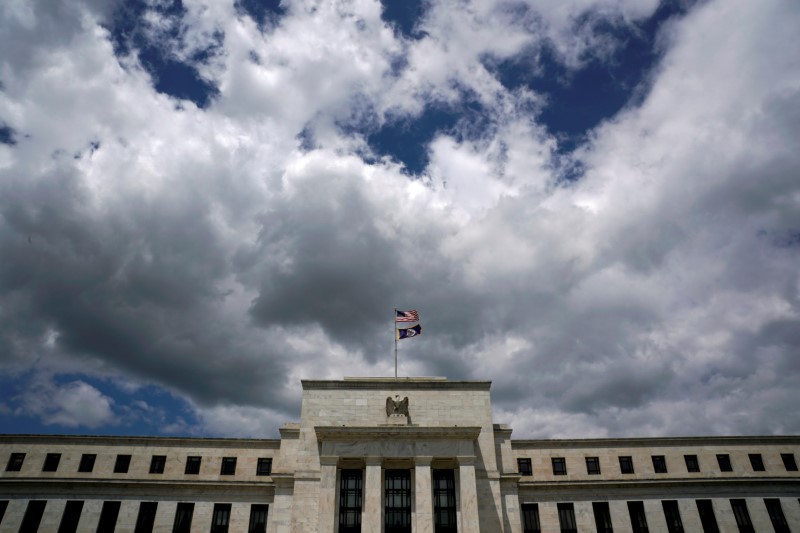 © Reuters. Clouds over the Federal Reserve in Washington
© Reuters. Clouds over the Federal Reserve in WashingtonBy Howard Schneider
WASHINGTON (Reuters) – The Cato Institute’s annual monetary policy conference on Thursday could have been a celebration of President Donald Trump making good on his 2016 campaign promise to shake the pillars of official Washington, including the Federal Reserve.
Instead, the event at the libertarian think tank became a eulogy of sorts for the idea that Republican control of the White House and Congress would significantly change how the U.S. central bank operates, and an acknowledgement that the political center is holding firm in some key ways.
Given a chance to reshape the central bank with a new Fed chief, Trump this month picked centrist lawyer Jerome Powell, a sitting Fed governor who is expected to continue current monetary policies, and with that the moment for revolution had passed.
“It is a bit demoralizing to realize that after delivering the same message for decades – that the world needs a rules-based monetary system – we have made virtually no progress,” Trump economic adviser Judy Shelton said to the crowd gathered in the Cato Institute’s F.A. Hayek auditorium in Washington.
“I have not been able to make the case … I have not convinced lawmakers on the Hill, let alone a sitting president, that it is time for the U.S. to initiate reform.”
Among the presenters at the conference, a gathering flavored with due deference to monetarist theoretician Milton Friedman and ample criticism of institutions like the Fed, were Stanford University economist John Taylor and former Fed Governor Kevin Warsh.
Both men were finalists on Trump’s short list to replace current Fed Chair Janet Yellen.
Conservatives and libertarians who feel it is dangerous to give central bankers too much leeway in deciding monetary policy had backed the prospect of a Fed led by Taylor, who is best known for the interest rate-setting “Taylor Rule.”
There was also some support for Warsh, who has argued that the U.S. central bank’s approach since the 2007-2009 recession and financial crisis has potentially fed financial instability, and that the Fed’s thinking has become intellectually narrow.
STATUS QUO
Trump’s choice of Powell, a Republican centrist who has worked at Yellen’s side for the last five years, signaled that the Fed’s basic approach of slowly raising rates and trying to avoiding any risky shifts in policy would remain intact.
Neither Taylor nor Warsh commented on Trump’s decision.
A Powell-led Fed “is Yellen II, a continuation of the same, which is troubling to me,” said David Beckworth, a research fellow at George Mason University’s Mercatus Center in Arlington, Virginia.
He advocates monetary policy that targets the level of gross domestic product as an alternative to the current strict inflation target, but agreed that type of shift “would need a leader to really cast a vision … If I had to bet on anything it would be status quo going forward.”
Status quo is not what Cato’s monetary policy conference is about. The talk on Thursday was of the asset bubbles the Fed may be feeding, the currency manipulation central banks are seen to be engineering in the name of fighting the last crisis, and the intrusions on liberty feared when unelected central bankers start buying bonds and changing asset prices.
The strong U.S. labor market, marked by a 4.1 percent jobless rate that many economists view as close to full employment, didn’t get as much mention.
Shelton, an advocate of a gold standard or some rule that fixes relative currency values, said she was surprised Taylor had been passed over for the Fed job, adding that White House officials had been impressed by him during the search. But she also said Powell would do a good job.
And she has not given up on more sweeping change, eventually, within the Fed and beyond.
“I don’t expect to see invitations going out next week for a new Bretton Woods conference at Mar-a-Lago,” she said, referring to the conference that established post-World War II monetary arrangements and institutions like the International Monetary Fund.
“I do think we will see more language out of the Treasury emphasizing the importance of stable exchange rates,” she said. “People are willing to talk about this in a way they have not been before.”
Source: Investing.com

























